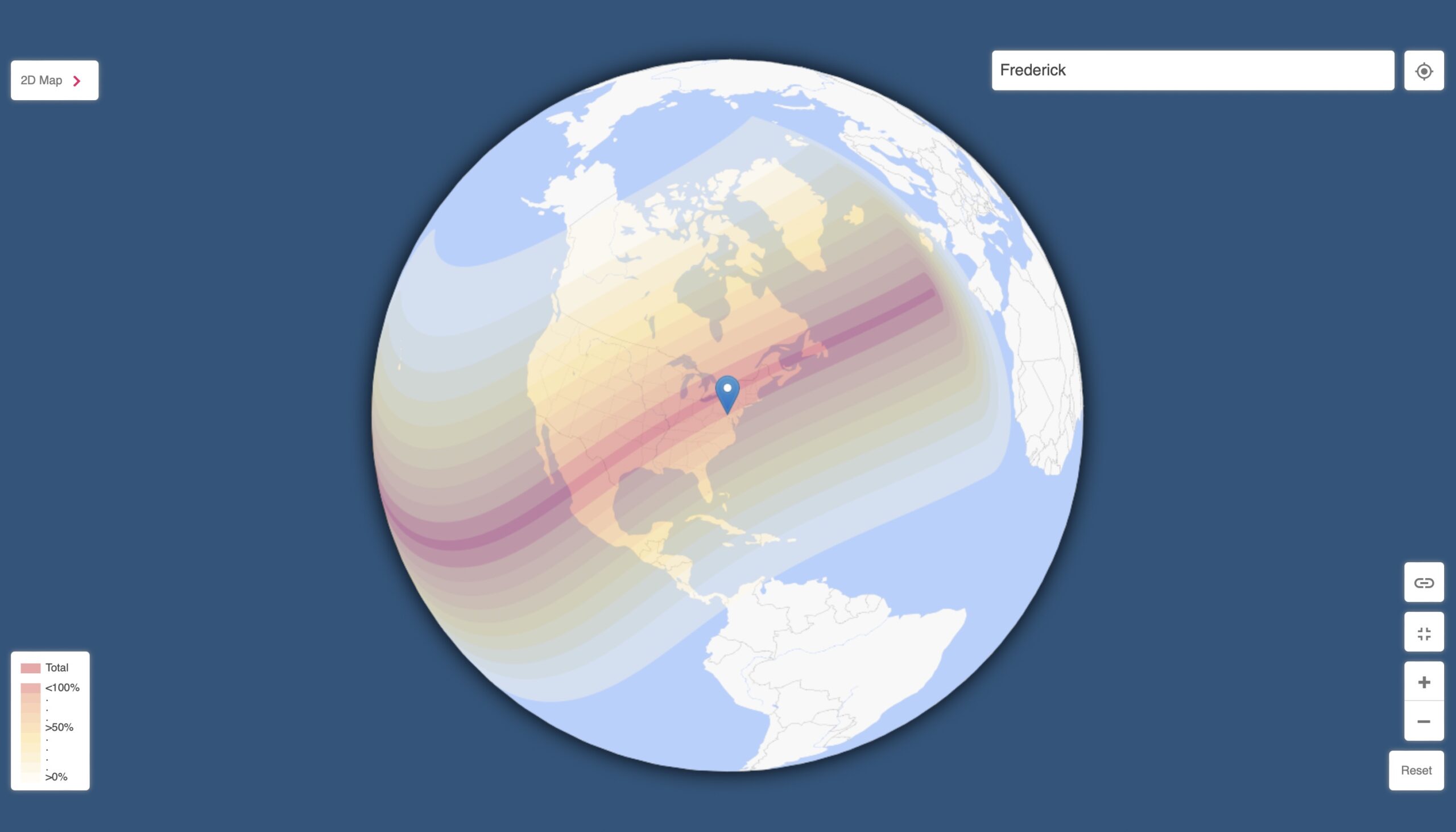
By Shel Bandelow
Join the Department of Chemistry and Physics in front of the Hodson Science Center on Monday, from 2 p.m. to 4:30 p.m. for a viewing of the partial solar eclipse.
The department’s viewing station will provide eclipse-viewing glasses during the designated time, along with infographics and possibly a telescope.
According to NASA, a solar eclipse occurs when the moon is between the Earth and the sun casting the moon’s shadow on Earth. The shadow consists of two cones: a dark inner shadow called the umbra and a lighter outer shadow called the penumbra. Within the darker shadow, eclipse observers will see the sun completely blocked in a total eclipse. In comparison, eclipse observers in the lighter shadow will see the sun partially blocked in a partial eclipse.
“While this will be a total eclipse, unfortunately, this won’t be a total eclipse here in Frederick, but it should be pretty good,” Steven Clark, associate professor of physics, said. “We will have 91% coverage, which really means if you go by the diameter of the sun, 91% of the diameter will be covered so it should be fairly dark for a few minutes.”
Other interesting occurrences that may happen during this partial solar eclipse are shadow bands, which may look like gray ripples or crescent shadows that appear to be moving on the ground.
“What you’re [essentially] describing is really a pinhole camera,” Clark said. “All the light has to go through a small hole, and then it essentially casts an image of the other object on the other side. Because the moon is going to be going in front of the sun, there will be kind of crescent-shaped shadows.”
It’s important to note that it’s never safe to look at the sun with the naked eye. The chemistry and physics department will provide viewing glasses that protect the eye from harmful UV rays. Normal sunglasses are not strong enough to protect the eyes when looking directly at the sun; eclipse glasses only let a small percentage of light through which protects the eyes.
“Do not look at [the eclipse] at any time without them because it can still cause damage,” he said. “I had a teacher in high school who said that he looked at a solar eclipse with very thick sunglasses and can still see it.”
Total and partial solar eclipses are rare. A total eclipse was seen in Frederick on Aug. 21, 2017.
According to NASA, the next total solar eclipse visible in Frederick will be on Aug. 23, 2044.
For more information about the eclipse, check out https://www.timeanddate.com/eclipse/in/usa/frederick?iso=20240408


Be the first to comment